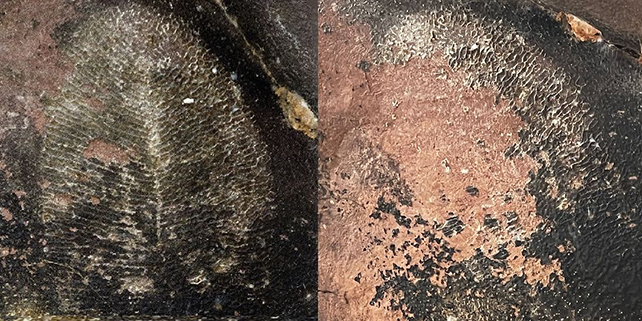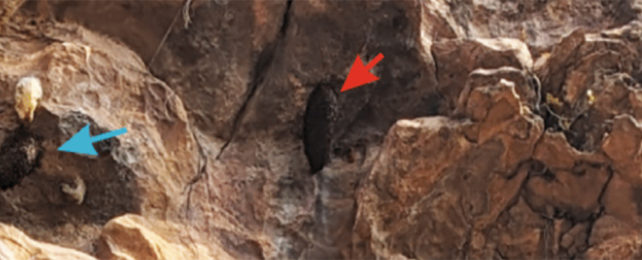The ancient Bhimbetka rock shelters in India are crucial to understanding the subcontinent's geological history, but dating them is difficult due to a lack of fossils.
Researchers were therefore excited to find evidence of the Dickinsonia creature in the caves in 2020, fixing their age at around 550 million years.
However, a new study reveals that what the scientists found wasn't a Dickinsonia fossil at all but a beehive. That means the age of the caves is up for debate again, with some research suggesting they might have been around for as many as 1 billion years.
The latest twist in the tale came about when researchers visited the caves and the supposed fossil of the Dickinsonia – a flat, oval-shaped, primitive marine organism. The 'fossil' had quickly decayed and was lying nearly vertically on a wall, whereas it would typically have been found on the floor or the ceiling.
"As soon as I looked at it, I thought something's not right here," says geologist Joseph Meert from the University of Florida. "The fossil was peeling off the rock."

That there were several other giant beehives in the caves backed up the new hypothesis. Further analysis revealed that this was, in fact, the remains of a quickly decaying beehive rather than the fossil of an animal that went extinct hundreds of millions of years ago.
If this had been a fossil, some of its decay might have been due to soot from fires, as the scholars of the earlier study argued at the time.
However, the latest study includes images showing dark staining around existing beehives that could be mistaken for soot. The staining, the new study contends, was likely the result of propolis, a "sticky, brown-colored material composed of a mix of beeswax, saliva, and plant resins used as 'glue' to repair and give integrity to the hive."
What's more, no other Dickinsonia fossils were ever found anywhere near here.
Based on previous examinations of the radioactive decay of tiny zircon crystals, the researchers suggest that the caves and their surrounding landscape are around 1 billion years old. The magnetic signatures of the rock also match the signatures of other rocks dated to that period.
"There are lots of implications," says Meert. "One has to do with the paleogeography at the time, what was happening to continents, where the continents were located, how they were assembled."
"And it was a period when life was going through a major change, from very simple fossils to more complex fossils. So trying to figure out the paleogeography at the time is very, very important. And in order to figure out the paleogeography, we have to know the age of the rocks."
While the researchers in 2020 seem to have got this one wrong, the authors behind the new study are keen to emphasize that this is how science works: Study gets added on top of study until the scientific facts come out.
This doesn't mean that there are huge numbers of incorrect studies out there. Rather, we know that much of what is published can be trusted because it's analyzed by other scientists and tested with further research.
Admitting that you got something wrong is difficult to do – try and remember the last time you did it at home or work – but in this case, the team that thought they had found a Dickinsonia fossil put their hands up to their mistakes.
"It is rare but essential for scientists to confess mistakes when new evidence is discovered," says paleontologist Gregory Retallack from the University of Oregon, one of the researchers behind the earlier study.
The research has been published in Gondwana Research.
